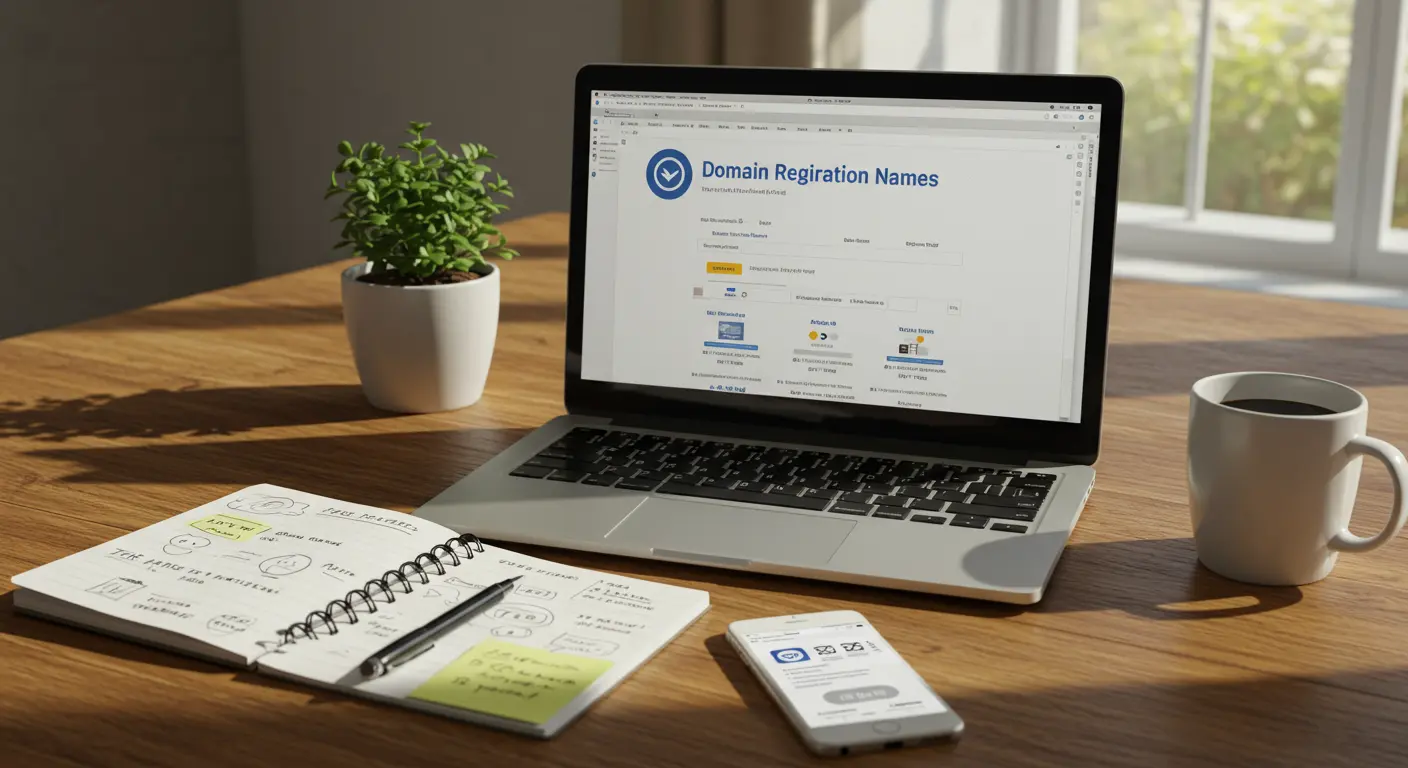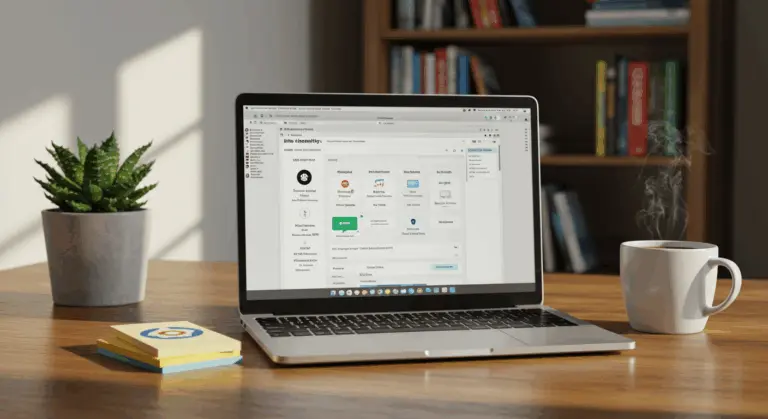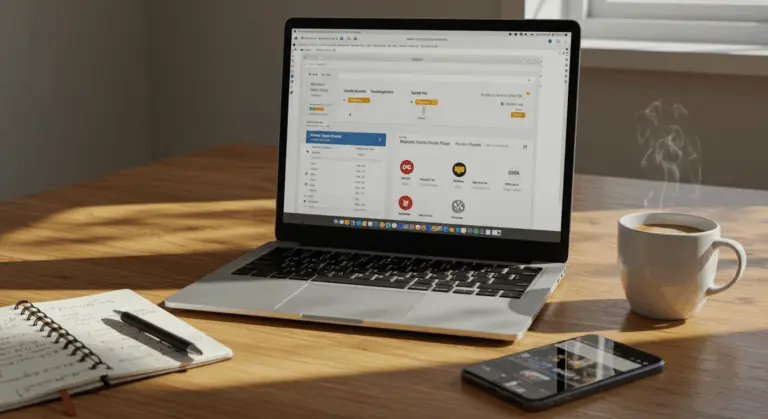Understanding Domain Ownership – What You Need to Know
Domain ownership represents the legal rights to a specific web address on the internet. Think of it like owning digital real estate—you have exclusive control over that virtual property and decide what happens to it. This control encompasses:
The domain owner is the individual or organization officially recorded in the registration database. Your responsibilities as the registered owner include maintaining current contact information and managing renewal fees. Let your domain lapse, and you risk losing ownership entirely—opening the door for others to snatch it up.
Here’s an important distinction: domain ownership differs fundamentally from website ownership. You might own a domain name while having zero website content attached to it. Conversely, you could operate a fully developed website using someone else’s domain through a licensing arrangement.
When you want a domain that’s already taken, understanding these ownership basics is essential. The current owner maintains complete control until they voluntarily relinquish those rights through a formal transfer process—something we’ll cover in the sections ahead.
Steps to Acquire a Domain That is Already Taken
Acquiring a domain that someone else owns demands a strategic, methodical approach. Here’s how to secure that domain name you want:
-
Verify Registration: Use established domain registrars like GoDaddy or Namecheap to confirm the domain is genuinely registered, not merely listed as a premium option.
-
Research its Status: Assess whether the domain powers an active website, sits parked, or remains undeveloped—this reveals the owner’s potential willingness to sell.
-
Identify and Contact the Owner: Perform a WHOIS lookup to find the owner’s details. Approach them professionally with clear intentions about your interest.
-
Negotiate the Purchase: Should the owner express willingness to sell, present a well-researched, reasonable offer. For expensive domains, consider hiring a domain broker.
-
Secure the Transaction: Use a trusted escrow service to hold payment until the domain is successfully transferred, protecting both you and the seller.
Patience is essential throughout this process. Some domain acquisitions wrap up within days, while others stretch across months of delicate negotiation—particularly for premium domain names that command top dollar.
Finding the Domain Owner – WHOIS Lookup Explained
WHOIS lookup is your primary tool for uncovering domain ownership. This comprehensive database houses registration information for every registered domain across the internet, making it the best resource when attempting to contact a domain owner.
To conduct a WHOIS lookup, navigate to ICANN’s official lookup tool at lookup.icann.org or use similar services from domain registrars. Enter your target domain name, and the system reveals whatever registrant information is publicly available.
Standard WHOIS records contain registrant details, though privacy services frequently mask this information. It typically contains:
-
The owner’s name and organization
-
Contact email address and phone number
-
Physical address
When domains hide behind privacy protection, you still have options. Most privacy services forward messages to the actual domain owner, allowing you to send inquiries through their provided contact channels. If the domain hosts an active website, scout for contact information there or utilize the site’s contact form to establish communication.
For trickier situations, social media becomes your ally. Search for the domain name or related business across platforms like LinkedIn, where you might uncover the company or individuals behind the domain. Professional networking sites often provide alternative contact methods when traditional WHOIS information is protected.
When you finally make contact, keep it concise and professional. State your domain interest clearly without revealing your maximum budget. A straightforward message expressing interest in discussing potential acquisition typically opens the conversation effectively.
Negotiating the Purchase – Tips for Success
-
Research Comparable Sales: Look up comparable sales using platforms like Name Bio and DN Journal to establish realistic pricing expectations before making your offer.
-
Communicate Strategically: Lead with a reasonable offer while keeping your maximum budget and specific plans private—sharing these details often increases the asking price.
-
Be Patient: Owners often need time to mull over your offer, particularly when they weren’t actively seeking to sell. Follow up courteously without applying pressure.
-
Consider a Domain Broker: For high-stakes or complex acquisitions, a broker’s experience can be invaluable in securing favorable terms.
-
Get It in Writing: Once you agree on a price, document all terms in a written purchase agreement to protect the transaction.
Using Escrow Services for Secure Transactions
Escrow services act as neutral third parties, safeguarding payment funds until every condition of a domain sale is fulfilled. This arrangement protects both buyers and sellers equally. For domain purchases from individual owners, escrow services are strongly recommended—especially when transactions exceed several hundred dollars.
Escrow.com is the industry standard for domain transactions, though reputable alternatives like Redo and Epic provide solid escrow protection. These services typically charge a fee based on the transaction amount, usually between 0.89% and 3.25% of the purchase price.
-
Initiate the Transaction: You and the seller agree on terms and establish a transaction on a trusted platform such as Escrow.com.
-
Buyer Deposits Funds: You place the agreed payment into the secure escrow account.
-
Seller Transfers Domain: With funds verified, the escrow service signals the seller to initiate the domain transfer.
-
Buyer Confirms Control: You confirm that you have received full control of the domain in your registrar account.
-
Escrow Releases Payment: After your confirmation, the escrow service releases the funds to the seller.
This system protects you from fraudulent sellers who might pocket your payment without delivering the domain. Simultaneously, it safeguards sellers from buyers who might reverse payments after securing the domain. For international transactions, escrow services are particularly valuable as they reduce the complications of cross-border payments and potential language barriers.
Before proceeding with escrow services, meticulously review all terms and conditions. Verify the escrow service’s legitimacy through reviews and official website confirmation—domain escrow scams unfortunately exist. Never agree to use unfamiliar escrow services suggested by the seller without thorough verification.
Assessing Domain Value – Tools and Techniques
Determining a fair domain price requires understanding multiple valuation factors and using specialized assessment tools. Domain values span an enormous range—from several hundred dollars for basic domains to millions for premium, single-word .com addresses.
Multiple online tools can assist with domain value estimation. Estimate provides automated appraisals considering keyword search volume, extension popularity, and comparable sales data. GoDaddy’s Domain Appraisal tool analyzes similar domains to generate value estimates. While these tools offer valuable starting points, remember that automated appraisals carry inherent limitations—treat them as guidelines, not definitive answers.
Historical sales data provides valuable context for domain pricing strategies. Platforms like Name Bio, DN Journal, and Redo’s market statistics track real domain transactions. Searching for sales of domains with comparable characteristics—length, extension, keyword appeal—helps establish realistic pricing expectations.
Several critical factors influence domain valuation:
-
Length: Brevity commands premium pricing.
-
Extension: The .com extension is most valuable in both preference and value.
-
Brandability: Does the name stick in memory, roll off the tongue, and suit brand development?
-
Keyword Relevance: Domains containing high-value keywords for an industry are more sought after.
A domain’s history significantly affects its market value. Investigate whether the domain served legitimate purposes previously by examining its backlink profile through tools like Ahrefs or MOZ. Domains boasting quality backlinks and clean histories often command premium prices, while those tainted by spam require cautious evaluation.
For high-stakes acquisitions, consider getting multiple professional appraisals from domain brokers or valuation specialists. These experienced professionals provide detailed assessments based on market knowledge that automated tools simply cannot replicate.
Legal Considerations When Buying a Domain
-
Define the Scope: Clarify whether you’re acquiring solely the domain or bundled assets like website content, social media accounts, or customer databases.
-
Check for Trademarks: Do thorough trademark searches before purchasing to avoid infringing on existing marks—a mistake that could trigger costly legal battles.
-
Use a Purchase Agreement: Draft a comprehensive written agreement detailing price, transfer procedures, and warranties—including the seller’s legal authority to complete the sale.
-
Verify Domain History: Research the domain’s background thoroughly to avoid inheriting reputational damage or penalties from previous misuse.
-
Address Data Privacy: If customer data is included in the sale, ensure the transfer complies with privacy laws like GDPR or CCPA.
Finalizing the Domain Transfer – What to Expect
After negotiating the purchase and securing payment arrangements, the technical transfer is your final step. This process shifts the domain from the seller’s account into yours and requires several important steps for seamless completion:
-
Unlock the Domain: The seller disables the transfer lock within their registrar’s control panel.
-
Obtain Authorization Code: The seller furnishes the unique EPP code (authorization code) essential for transfer completion.
-
Initiate Transfer: You provide the domain name and auth code to your registrar to begin the transfer.
-
Approve the Request: The seller receives and must approve a transfer confirmation email from their registrar.
-
Wait for Completion: Registrars typically require 5–7 days to finalize the transfer process.
-
Finalize Ownership: With the domain secured in your account, update WHOIS information with your details and activate auto-renewal to prevent inadvertent expiration.







